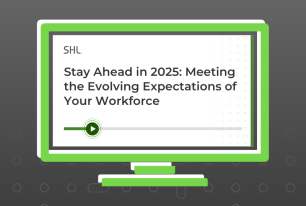How to Reduce Microaggressions in the Workplace
Organizations can reduce microaggressions in the workplace through these actions: Leading by example, facilitating honest discussions, building a supportive culture, and committing to lasting change.
Share
Recent events, like the murder of George Floyd, brought racial inequity into the global spotlight. A lot has happened since. Or has it? Organizations have shared their anti-racism standpoints, some even made substantive changes, but now the topic and original intent seem to be lost again in the insatiable 24-hour news cycle. That does not mean that the work is done or that everything is “back to normal.”
The fight for racial justice and equality is emotionally and physically exhausting. People of color have experienced this fatigue for generations. But I continue to remind myself that it is important not to lose sight of the challenges encountered by many of our colleagues on a daily basis. Small changes make a difference, and now is the time for leaders and managers to look inward and address microaggressions within their organizations.
Microaggressions – a term first coined in the 1970s – are comments or actions that subtly express a prejudiced attitude toward a member of a marginalized group. For instance, asking a colleague based in India if they ride elephants to travel, telling a black colleague that they sound so professional when they speak, or asking a mother if she misses her kids while she’s at work.
Organizations have shared their anti-racism standpoints but now the topic and original intent seem to be lost again in the insatiable 24-hour news cycle.
The impact of microaggressions is subtle yet pervasive and can be exhausting for individuals on the receiving end to navigate. When factoring in workplace politics and non-specific stressors of life in general, along with the fact that microaggressions may be just as damaging to an individual as more overt forms of discrimination, the impact of microaggressions on an individual can be incredibly harmful. If a team or organization tolerates microaggressions or denies their existence, employees will notice and may decide to leave for opportunities elsewhere.
This may leave you wondering what can I do as a leader to minimize microaggressions within my team? Here are actions to take to build an inclusive and respectful workforce, starting today!
#1—Lead by Example
As a leader, you hold a position of authority and power. One of the best things you can do is to use your power for positive change! Practice a culture of inclusivity, respect, and appreciation, and make the team understand that microaggressions don’t belong. Be aware of your own statements and actions and set an example of accountability by acknowledging when you’ve inadvertently committed a microaggression. Be open to feedback, and listen to understand, not to reply.
#2—Facilitate Discussion
If your team is not as comfortable discussing topics like racism, sexism, or ableism, start by holding informal small-group discussions about the topics. Ask your team if they’ve ever experienced a microaggression in a former job or with a client. Work with your team to talk through how they could respond if they witness a customer, client, or colleague committing a microaggression. Practicing saying the words out loud in a safe environment makes it easier to address in other situations.
Practicing saying the words out loud in a safe environment makes it easier to address in other situations.
#3—Build a Supportive Culture
Encourage your team to listen to and respect each other and suggest a system of support and accountability so that nobody feels “alone” when confronting microaggressions. Above all, make sure that you clearly communicate that you support your team and their individual choices to speak up when they feel compelled to do so and that you will similarly support them if they don’t feel comfortable enough to speak one’s mind.
#4—Commit to the Marathon
The work of breaking down long-established biases and manners is not a sprint. The effort to put in to facilitate true change will never be finished, so avoid feeling discouraged when new issues arise. This is a given. Also, remember that your team will keep an eye on you for cues of how to react, so building in quarterly conversations to keep these challenging topics from being lost in the shuffle is important.
Microaggressions are pervasive and subtle, however, as a leader you have the power to reduce their occurrence through leading by example, facilitating honest discussion, building a supportive culture, and committing to long-term action for yourself and your team. Your efforts will create iterative but lasting change, improving the well-being and happiness of employees. Now is a wonderful time to start this journey.
Contact SHL to learn more about reducing bias in your hiring and professional development practices to support building a diverse and inclusive workplace.









